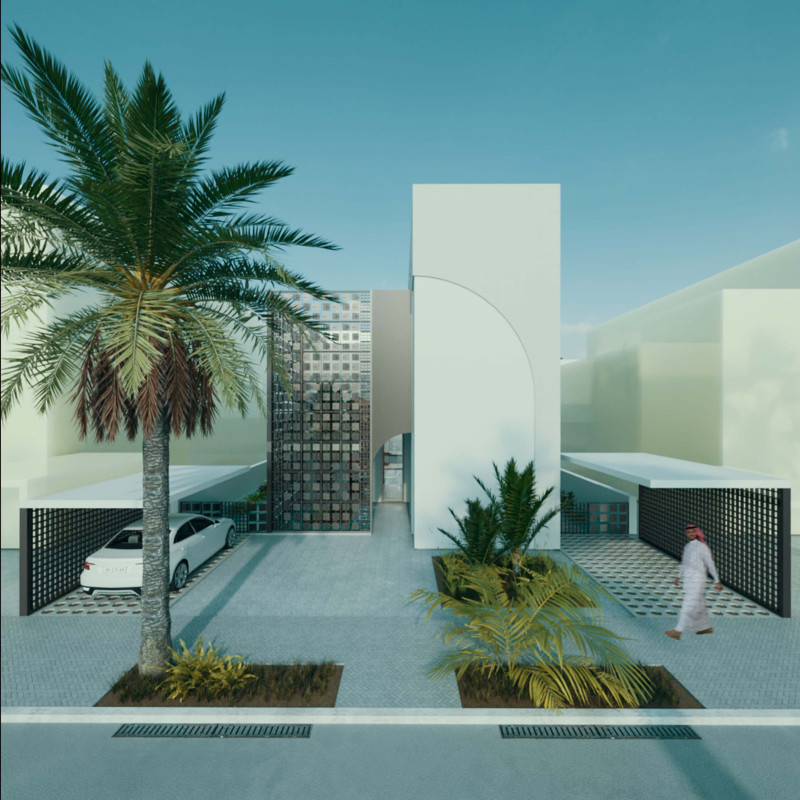5 key facts about this project
At first glance, the project exhibits a clear architectural language characterized by clean lines and a carefully chosen material palette that complements its surroundings. The design employs a mix of materials, such as reinforced concrete, glass, and timber, which not only create visual interest but also respond to the environmental conditions and the intended use of the building. The use of reinforced concrete provides structural integrity and longevity, while extensive glazing introduces natural light, creating a warm and inviting atmosphere. Timber elements, used strategically throughout the facade and interiors, add an element of warmth and texture, fostering a connection with nature.
The project's layout is meticulously organized to optimize functionality and flow. Gathering spaces are positioned at the heart of the design, encouraging collaboration and engagement among users. The architectural design accommodates both private and public areas seamlessly, with flexible spaces that can adapt to various activities. This dynamic approach allows for a range of events, from community gatherings to individual workshops, highlighting the project’s versatility.
One of the standout features of the design is its emphasis on sustainability. The architectural approach incorporates passive design strategies that maximize energy efficiency, reducing the overall environmental impact. This is evident in the strategic orientation of the building which allows for optimal natural lighting and ventilation. Furthermore, green roofs and living walls are integrated into the project, not only enhancing the aesthetic appeal but also contributing to local biodiversity and improving air quality in the urban setting.
The project also prioritizes accessibility, with thoughtful circulation paths that accommodate individuals of all abilities. The seamless flow between indoor and outdoor spaces encourages users to engage with the building in a variety of ways. Outdoor terraces and gardens provide much-needed respite from the urban environment, creating a sense of retreat and tranquility for users.
Unique design elements, such as dynamic shading devices and interactive installations, add layers of engagement that invite users to explore the building further. These features serve not only an aesthetic function but also contribute to the building’s overall performance, enhancing comfort for its occupants.
Materials play a pivotal role in this architectural design, with reinforced concrete, triple-glazed glass, sustainably sourced timber, and high-performance insulation panels forming the foundation of the construction. Each material was chosen not only for its structural capabilities but also for its ecological credentials, ensuring that the design is aligned with modern sustainability principles.
In summary, this architectural project represents a harmonious blend of functionality, aesthetic appeal, and environmental responsibility. Its design showcases an innovative approach that encourages community interaction while providing spaces for personal reflection. Each element, from the choice of materials to the layout, contributes to a cohesive narrative that emphasizes the importance of both public and private realms in contemporary architecture. For readers interested in a more in-depth exploration of the project, including architectural plans, sections, and detailed designs, further investigation is encouraged. Engaging with the architectural ideas presented will provide valuable insights into the creative and functional aspects of this remarkable project.


























